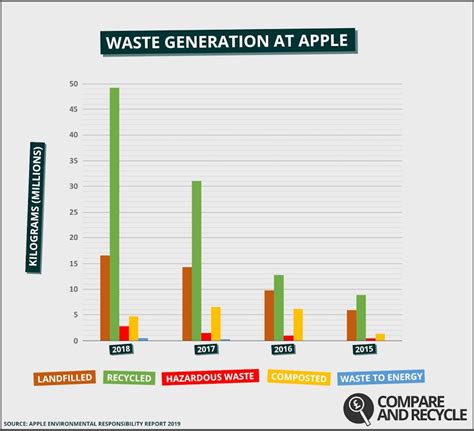With its state-of-the-art devices and eco-friendly marketing, Apple has long reigned supreme in the tech world. However, recent reports suggest that even industry giants are not immune to regulatory scrutiny. The Environmental Protection Agency (EPA) has identified at least 19 potential violations at Apple’s facility in Santa Clara, California, focusing on improper labeling and handling of hazardous waste. This development raises some critical questions about corporate accountability, especially in a densely populated area where mismanagement of hazardous materials could have far-reaching public health implications.
This situation has generated an intense debate among both industry experts and the public. Critics argue that Apple, despite its significant resources, shows a worrying disregard for environmental protocols. Comments from users like ‘martinky24’ question the legitimacy of these claims, suggesting they may stem from disgruntled former employees. On the other hand, individuals like ‘walterbell’ speculate that regulators might be compromised, especially given the ubiquity of Apple devices even among government inspectors. This skepticism highlights a troubling perception: that big corporations can circumvent regulations with ease.
Indeed, the EPA findings suggest that Apple had been ‘illegally treating hazardous waste,’ ‘illegally transporting hazardous waste to disposal facilities,’ and ‘illegally dumping hazardous waste into the ambient air outside the facility.’ Such practices, if proven true, would violate the Resource Conservation and Recovery Act (RCRA) and present severe public health risks. User ‘SV_BubbleTime’ noted, ‘things like at least 19 potential violations…is about 00.00% noteworthy…until it is defined as to what those are.’ This comment underscores the intricate nature of regulatory compliance, where minor deviations, often deemed administrative, can sometimes be blown out of proportion.
Moreover, this isn’t the first time corporate facilities in urban settings have drawn criticism. Comparable situations have occurred globally, driving regulatory bodies to impose stricter compliance measures on companies engaged in hazardous material management. The comments also reflect personal anecdotes, such as ‘hanniabu,’ who described working at a Colgate manufacturing plant where inspections were anticipated, leading to superficial changes rather than genuine compliance. The insight here is revealing: EPA and similar bodies must conduct surprise inspections to truly gauge operational standards.
The implications go beyond just Apple and the tech sector. Companies operating in any industrial capacity near residential areas must rigorously adhere to environmental standards. The cited EPA report and attached codes highlight what might happen when compliance falters. Users like ‘langsoul-com’ invoked historical precedents, such as the Minamata disaster in Japan, underscoring the extreme consequences of corporate neglect. The comments reveal a common sentiment: trust in regulatory agencies like the EPA is crucial, yet easily undermined when checks seem insufficient or manipulated.
In this densely interconnected world, companies must rise to the occasion by adopting both effective and transparent environmental policies. Vigilance and proactive strategies should replace any tendency to cut corners or play fast and loose with the regulations. For Apple, facing accusations of improper waste management means more than just potential fines; it’s a strike against the core ethos they’ve long marketed – sustainability and environmental stewardship. While many comments argue this is a settle-and-forget issue, the broader stakes suggest otherwise. Missteps in Silicon Valley serve as cautionary tales, reinforcing the urgent need for stringent compliance to prevent not just environmental damage, but also significant reputational harm.


Leave a Reply